
North America

Europe

Latin America

Asia Pacific

Africa

Middle East

North America

Europe

Latin America

Asia Pacific

Africa

Middle East
Terran Ronne has been with Alltech since 2015 and previously served as the company’s Midwest marketing specialist and Western U.S. marketing manager. She is former president of the National Agri-Marketing Association’s Northern Prairie chapter and served as the treasurer of its board for four years. Ronne holds an undergraduate degree in public relations and journalism from North Dakota State University and a master’s degree in agriculture from Murray State University. She is based in the Alltech office in Brookings, South Dakota.

August 3 is a date that holds special significance for the Alltech family. This year, Alltech team members around the world are reflecting on the legacy of founder Dr. Pearse Lyons, who would have celebrated his 80th birthday in 2024.
Known for his innovative spirit and compassionate heart, Dr. Lyons inspired so many to make a positive impact in the lives of others. In his honor, Alltech team members have embraced Make a Difference Day, an opportunity to give back to our communities. Frequently, Make a Difference projects extend well beyond that one day, and many are close, long-standing relationships with organizations in need.
This year, Alltech New Zealand has chosen to focus on a cause close to their hearts: Saving Hope, a dedicated pup rescue and rehabilitation organization that lives by the motto “No Dog Left Behind.” Since its founding in 2017 by mother-daughter duo Janine and Anita Hinton, Saving Hope has successfully rescued, rehabilitated and rehomed over 3,000 dogs. Its commitment to a “no-kill” policy has provided countless rescue pups with the care and love they deserve.
In alignment with the Make a Difference campaign, the Alltech New Zealand team organized a blanket drive for Saving Hope, collecting essential items such as blankets, bedding, dog food, and accessories.
They were thrilled to partner with The Natural Pet Treat Company Limited, which generously donated 3,000 bottles of lactose-free pet milk. Additionally, three local Bunnings Warehouse stores in Manukau, Mt. Wellington and Botany served as donation points, enabling the community to contribute directly to the mission.
This outpouring of generosity by the Alltech New Zealand team alongside these community partners reflects the shared commitment to animal welfare that Dr. Lyons championed throughout his life.
Saving Hope expressed gratitude on social media, stating, “It has been an incredible month for kind souls wanting to help the pups in our care.”
If you feel inspired to make a difference in the lives of rescue pups, consider ways you can donate or otherwise contribute to a dog shelter, including:
Your time and contributions can help transform lives, one pup at a time. Together, we can ensure that no dog is left behind.
For more information on how to support Saving Hope, or to learn about other ways to help rescue pups, reach out to the Alltech team or visit Saving Hope today.
About the author:

Terran Ronne is head of marketing for global pet and corporate accounts at Alltech. She has been with Alltech since 2015 and previously served as the company’s Midwest marketing specialist and Western U.S. marketing manager. She is former president of the National Agri-Marketing Association’s Northern Prairie chapter and served as the treasurer of its board for four years. Ronne holds an undergraduate degree in public relations and journalism from North Dakota State University and a master’s degree in agriculture from Murray State University. She is based in the Alltech office in Brookings, South Dakota.
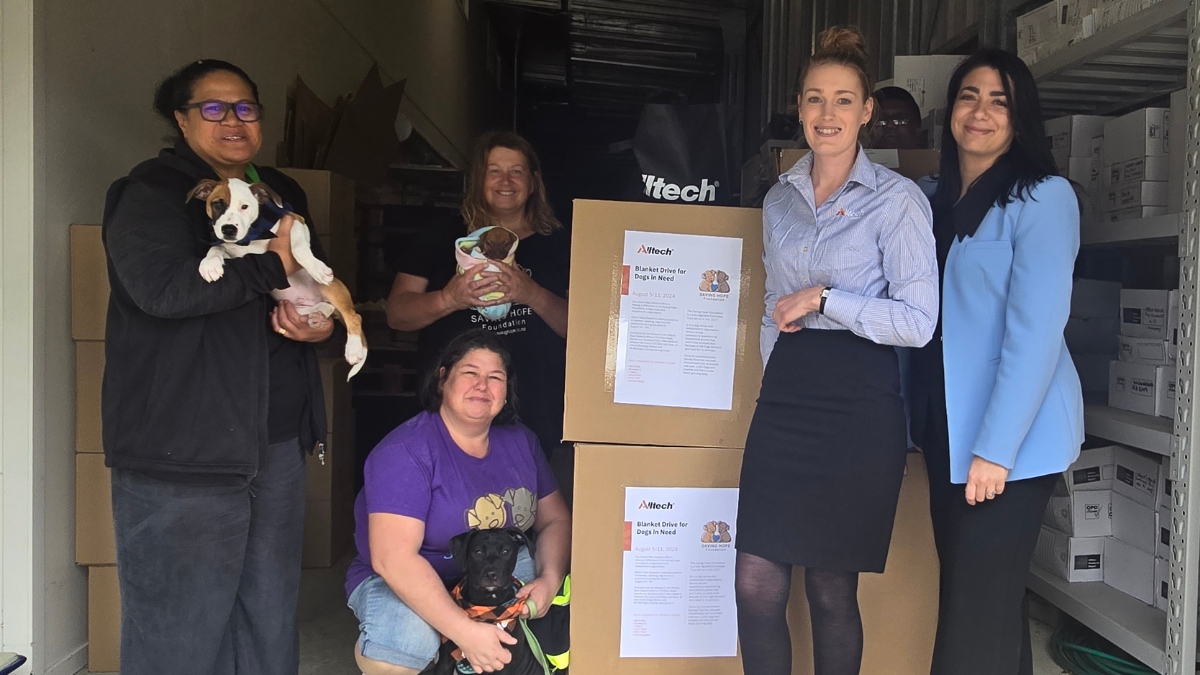
Patrick Charlton, Vice President for Europe at Alltech, outlined the company’s ongoing focus on acquisitions and organic expansion during an interview with Expana at EuroTier in Germany last week. “We are absolutely still in the acquisitional marketplace,” Charlton stated, “Organic growth has always been a significant part of the company’s plan, which was further enhanced by acquisitions and mergers… we see no reason why this won’t continue into 2025.”
The Alltech Harvest Analysis is a comprehensive step in understanding the complexities of new-crop quality and mycotoxin prevalence.
The program captures trends and enables robust data comparisons across years and regions. This analysis empowers feed and livestock producers to make informed decisions.
[DUNBOYNE, Ireland] – Alltech, a global leader in animal nutrition and agriculture, was honoured at this year’s Better Farming Awards for the Best Journalistic Content of the Year for the World Without Cows documentary and the Best Adaptation Product for the KEENAN Diet Feeder. They were also finalists in the categories of Best Environmental Research Programme/Project for the Alltech EU Applications Lab, "Eminex and AD Additives: Advancing On-Farm GHG Reduction, Biogas Optimisation, and Sustainable Agriculture in Ireland"; and Best AgriTech Science Product for Alltech Optigen®.
“These nominations and awards are not only a wonderful achievement for the teams from the Alltech Ireland family of companies and all that they work for day in and day out, but huge recognition for the global effort put into World Without Cows and the difference it can make for the agricultural industry far and wide,” said Rachel White, Alltech Ireland marketing manager.
World Without Cows is a feature-length documentary that explores the complexity behind a seemingly simple question – “Would we be better off in a world without cows?” It is a Planet of Plenty® production, commissioned by Alltech president and CEO Dr. Mark Lyons and developed and filmed by award-winning journalists Michelle Michael and Brandon Whitworth. Through interviews with farmers, ranchers, scientists, and others on the front lines of producing food and sustaining the environment, the filmmakers take viewers on a global journey to deepen their understanding of everything cows contribute and what the world might look like without them.
“KEENAN was crowned winner for Best Adaptation Product, recognising how the KEENAN system improves farm production efficiency and carbon footprint, and this research led to accreditation by the Carbon Trust,” said Robert Walker, chief growth officer at Alltech and CEO of KEENAN. “This is a proud moment and great validation for our team who have worked hard over the past 18 months. After making significant changes to our KEENAN business in 2023, we are pleased to report that we have a great pipeline of sales, our financials are strong, and we are working on some very significant innovations. Well done to our entire team!”
The Alltech team is also proud of their showing in the research category, as it was the most competitive category in the contest, with only five points out of a possible 300 separating all four finalists.
“Alltech's hard work was recognized beyond our walls at the Better Farming Awards as we were named finalists of the KPMG Best Environmental Research Project for our groundbreaking slurry additive research and biogas product development, all driven by the dedication of our Applications Lab team,” said Dr. Patrick Ward, Europe and Asia-Pacific applications manager at Alltech. “Our mission is to keep leading the charge in reducing on-farm GHG emissions, whether it’s for ruminants or swine, and to powerfully support the Irish and global biomethane industry. Congratulations to the entire team, and a heartfelt thanks to our partners at Alzchem, who stood with us at the awards.”
For more information, visit Alltech Ireland alltech.com/en-ie, KEENAN alltech.com/keenan and World Without Cows worldwithoutcows.com.
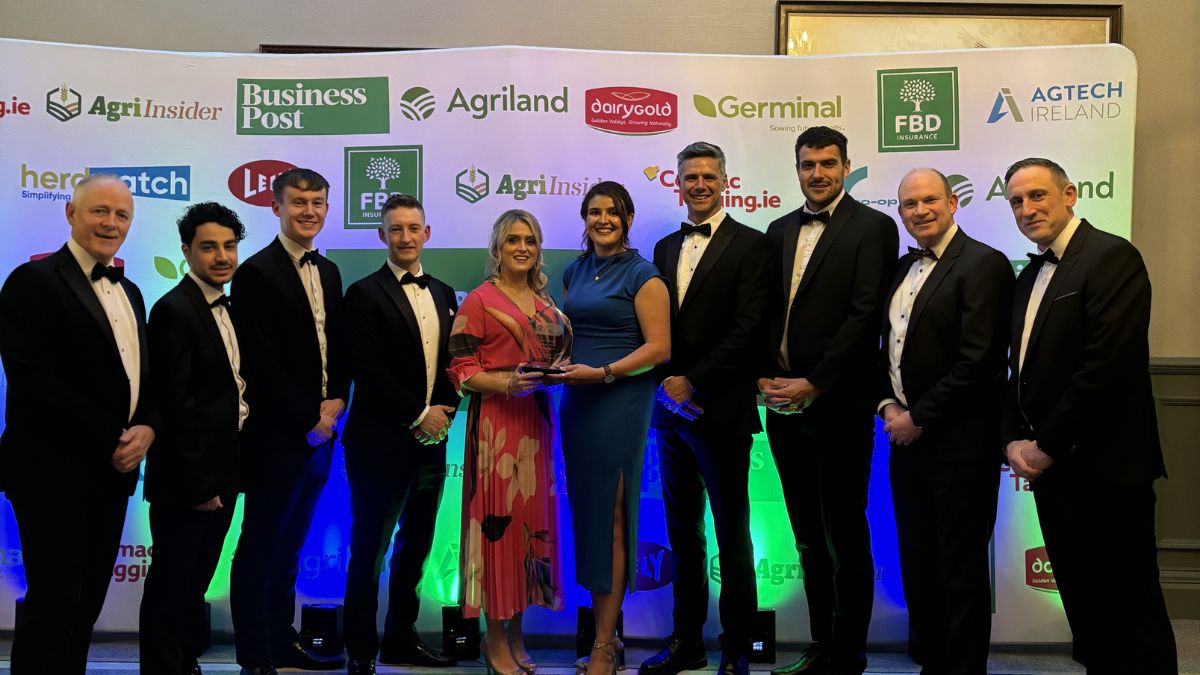
Alltech was honoured at this year’s Better Farming Awards.
Weaning can be stressful for both calves and producers. A good diet can help, supporting the calves’ growth and productivity throughout the feeding period. Importantly, such a diet can also guard against illness and bacterial infection, both of which can gain a toehold at this transitional time.
Respiratory disease is the most common ailment during the weaning period. For example, a calf is most susceptible to bovine respiratory disease (BRD) during its first four weeks post-weaning. BRD costs the beef industry over $1 billion annually, and prevention is key in reducing treatment costs and preventing performance losses.
Since an animal’s digestive tract contains approximately 70% of its entire immune system, rumen development and gut health should be at the top of the list when weaning and receiving calves and getting them started on feed.
Gut health refers to an animal’s ability to efficiently absorb and utilize nutrients and to keep harmful microbes and pathogens contained. If the lining, or barrier, of the digestive tract is weak, these microbes and pathogens can escape into the rest of the body, causing numerous diseases, including BRD.
Because cattle stressors — not only weaning itself, but transportation, commingling, changes in diet, and diet restriction — can harm the gut lining, continuous support for gut health is essential. Feeding strategies that focus on this are vital to increasing performance and reducing treatment costs, leading to more profitable production.
Many good articles and blogs are available to provide tips for successfully weaning calves and adapting them to feed. A good rule of thumb is that calves should be consuming 2.5% to 3% (on a 100% dry matter basis) of their body weight within the first 30 days post weaning. Gradual increases in feed quantity, along with gradual diet or ingredient changes, will aid in the proper adaptation of rumen microflora, improving gut health.
However, feed quantity is only part of the puzzle. Microbes within the digestive tract have vitamin and mineral requirements for proper function and nutrient digestion. Supplementing these in the weaning ration is crucial to gut health, not only supporting nutrient uptake overall but enhancing immunity and improving response to vaccines and treatments.
Vitamin and mineral supplements vary widely and should be chosen carefully for maximum benefit. For example, organic trace minerals are considerably more bioavailable to calves during weaning, which aids in nutrient absorption, bolsters gut health, and reduces harmful excretions of excess minerals into the environment.
Prebiotics and probiotics are also gaining ground in today’s feeding and supplementation programs. Both are excellent options to improve gut health at weaning.
Prebiotics are non-digestible feed ingredients that selectively stimulate the growth and activity of bacteria within the digestive tract, providing “food” for the beneficial microbes already existing there. Research shows that prebiotics enhance rumen fermentation, improve digestion, aid in nutrient absorption, and contribute to immune system development.
Probiotics are specific types of live microorganisms, including bacteria from the Bacillus, Lactobacillus, Bifidobacterium and Enterococcus groups as well as mannan oligosaccharides (MOS) derived from yeasts such as Saccharomyces cerevisiae. They help shift the gut microbiome in favor of helpful microbes that are known to improve health and performance. Probiotics also naturally produce metabolites such as short-chain fatty acids (SCFAs), vitamins, enzymes and antimicrobial compounds, which play important roles in building gut health and integrity and reducing harmful inflammation.
Weaning is an especially tricky time, but a smart diet strategy can turn it into an opportunity. By providing good nutrition to your calves, you can promote growth and productivity, prevent illness and infection, and maximize profitability.
About the author:

Bryan Sanderson grew up in Lake Preston, South Dakota, and spent most of his childhood working on pig, crop and cattle farms. After receiving a degree in animal science from South Dakota State University, with minors in ag marketing and ag business, Bryan began his impressive career in animal agriculture. With experience in livestock production, feedlot supervision, sales and finance, Bryan is currently the U.S. beef business manager for Alltech.
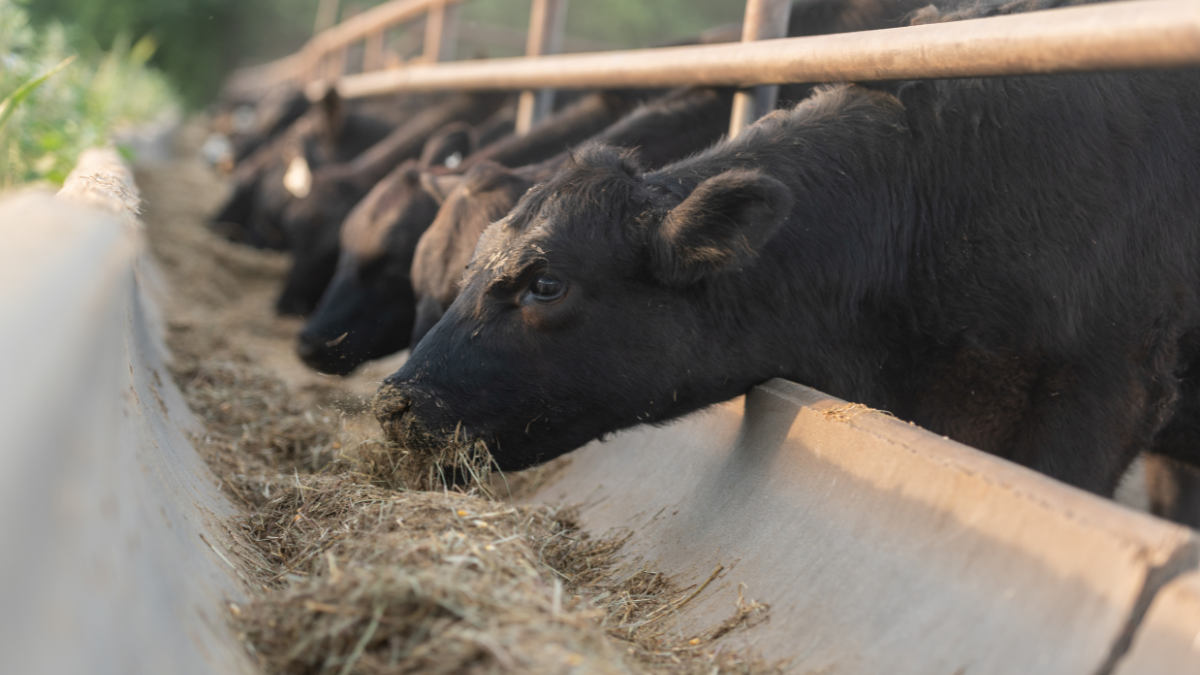
Producers are feeling the pinch of rising input costs, even with cattle prices at near-record highs. What this might ultimately mean for smaller producers and size of the national cow herd is still unclear.
Bağırsak sağlığının iyi olması, buzağının yemdeki besinleri verimli bir şekilde kullanmasını sağlayarak, onlara güçlü, istikrarlı ve sağlıklı bir başlangıç sağlar. Ancak, buzağının bağırsağında mikroskobik seviyede bir mücadele devam ederken, buzağının gerçek genetik potansiyeline ulaşmasına yardımcı olmak, genellikle söylendiği kadar kolay değildir. İneklerde ve buzağılarda bağırsak sağlığını anlamak ve sürünüzün sağlığı konusunda daha proaktif bir üretici olmak, işletmenizin genel verimliliğini ve başarısını etkileyecektir.
İNEKLERDE VE GENÇ BUZAĞILARDA BAĞIRSAK SAĞLIĞINI ANLAMAK
Bir hayvanın gastrointestinal sistemi milyarlarca bakteriden oluşur. Bu bakteri popülasyonu hem bazı patojenik bakterilerden hem de hayvan için faydalı olan diğer bakterilerden oluşur. Sağlıklı bir bağırsakta, bu bakteriler birbirlerini dengede tutar. Bağırsak sağlığı sorunları, bu denge bozulduğunda ve zararlı bakteriler, faydalı bakterilerden sayıca fazla olduğunda başlar.
Zararlı bakterilerin sorun yaratması için önce bağırsağa tutunmaları ve orada çoğalmaya başlamaları gerekir. Antibiyotikler zararlı bakterileri öldürür, ancak faydalı bakterileri de öldürebilirler, bu nedenle buzağılarda bağırsak sağlığını ele alırken farklı, daha proaktif bir yaklaşım benimsemek faydalı olabilir.
Bağırsak sağlığını desteklemek için zararlı bakterilerden kurtulurken faydalı bağırsak bakterilerini korumak çok önemlidir.
İyi bağırsak sağlığının sığırlar için birkaç yönden faydaları vardır, bunlardan bazıları şunlardır:
Büyüyen buzağıların sağlığı için faydalı bağırsak bakterilerinin korunması çok önemlidir.
BAĞIRSAK SAĞLIĞINA PROAKTİF BİR YAKLAŞIM
Geleneksel görüşe göre, bağırsak sindirim sisteminin sadece bir parçasıdır. Ancak, aynı zamanda bağışıklık sisteminin aktif bir bileşeni olduğunu da biliyoruz.
Bağırsağın ikili işlevi göz önüne alındığında, buzağılarda optimum bağırsak sağlığına ulaşmanın bir yolu, faydalı bakterileri teşvik etmek ve doğal savunmaları desteklemek için oluşturulmuş bir yem katkısı kullanmaktır. Hayvan sağlığına yönelik bu önleyici yaklaşım, hasta buzağı sayısını azaltmaya ve dolayısıyla antibiyotik tedavilerinin miktarını da azaltmaya yardımcı olabilir. Bu, üreticilerin yoğun buzağılama sezonunda değerli zaman ve paradan tasarruf etmesini sağlayabilir.
Son 20 yıldır Alltech, beslenme teknolojilerini kullanan yönetim uygulamalarını ve bu teknolojilerin buzağı sağlığı ve performansı üzerindeki etkilerini değerlendiren bilimsel denemeler yürütmüştür. Örneğin, belirli yüksek kaliteli prebiyotiklerin buzağı bağırsak sağlığını olumlu yönde etkilediği kanıtlanmıştır. Prebiyotikler, bağırsaktaki bir veya sınırlı sayıda mikroorganizmanın büyümesini ve/veya aktivitesini seçici olarak uyaran, sindirilemeyen gıda bileşenleridir.
Güçlü buzağı bağışıklığının oluşturulması anne ile başlar
GELİŞMİŞ PERFORMANS İÇİN DAHA İYİ SAĞLIK
Üreticiler, sürülerinin genetiğini geliştirmeye çalışmak için çok fazla zaman ve para harcıyorlar. Hem güçlü bağışıklık sistemi gelişimi hem de sağlıklı bir gastrointestinal sisteme sahip olan buzağılar besinleri daha verimli bir şekilde kullanabilir ve genetik potansiyellerine daha iyi ulaşabilir.
Buzağıları daha sağlıklı hale getirebilir ve zararlı bakterileri dengede tutarak harcadıkları enerjiyi azaltabilirsek, daha iyi bir performans elde edebiliriz.
İyileştirilmiş bağırsak sağlığı ve gelişmiş performans ilkesinin en iyi uygulama zamanı, sütten kesme ve besi çiftliğine giriş gibi stres dönemleridir. Bu stresli zamanlar, yeni patojenlere maruz kalma ve yem alımının azaldığı dönemler nedeniyle hayvan sağlığını ve büyümesini olumsuz etkiler. Artan verimlilikten kaynaklanan gelişmiş performans, üreticinin cebine daha fazla para girmesi anlamına gelebilir.
Bu, şu şekilde elde edilebilir:
Denemeler, şüphesiz, gelişmiş buzağı sağlığı ve bağışıklığının daha iyi büyüme ve kazanımlara dönüştüğünü göstermiştir.
Beslenme teknolojilerinin kullanımında proaktif olmak ve sağlıklı bir bağırsak oluşturmak, üreticilerin buzağılarına genetik potansiyellerine ulaşmaları için ihtiyaç duydukları avantajı sağlayabilir.
SAĞLIKLI BAĞIRSAKLARI DESTEKLEMEK
Bio-Mos, bağırsak mikroflorasını normalleştirerek gastrointestinal sistemi koruyan ve bağırsak sağlığını destekleyen, faydalı mikro organizmaların çoğalmasını teşvik ederek ve vücuttaki savunma sistemini uyararak bağışıklık sisteminin gelişimine katkıda bulunan bir Alltech çözümüdür. Sağlıklı bir bağırsak sistemine sahip buzağılar, kolostrumdaki besinleri daha iyi emebilir ve katı yeme geçiş yaptıklarında yemden daha fazla faydalanabilirler ve yüksek performansı sürdürme potansiyellerini en üst düzeye çıkarabilirler.
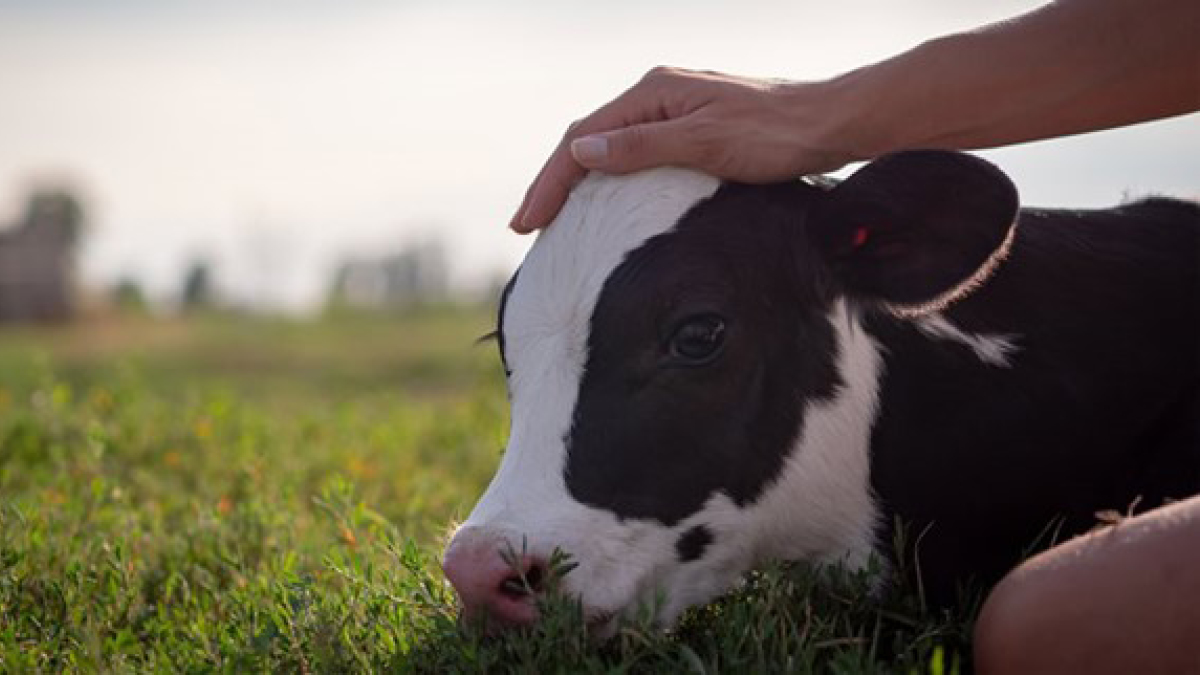
Üreticiler, sürülerinin genetiğini geliştirmeye çalışarak çok fazla zaman ve para harcıyorlar. Hem güçlü bağışıklık sistemi gelişimi hem de sağlıklı bir gastrointestinal sisteme sahip buzağılar, besinleri daha verimli bir şekilde kullanabilir ve genetik potansiyellerine ulaşabilir. Buzağıları daha sağlıklı hale getirebilir ve zararlı bakterileri dengede tutarak harcadıkları enerjiyi azaltabilirsek, daha iyi bir performans elde edebiliriz.
Les récentes analyses de mycotoxines dans les ensilages et les grains canadiens, réalisées dans le cadre de l'analyse de la récolte canadienne Alltech 2024, révèlent une variabilité régionale importante des niveaux de contamination, l'ensilage de maïs présentant des risques particulièrement élevés.
Les mycotoxines, qui sont des substances naturelles produites par des moisissures et des champignons, sont un sujet de préoccupation pour les éleveurs de bétail, car elles peuvent influencer la qualité des aliments et, par conséquent, la santé et les performances des animaux. Malheureusement, elles sont plus répandues - et constituent un problème plus important dans l'agriculture - que jamais auparavant. Aujourd'hui, plus de 95 % des cultures sont contaminées par au moins une mycotoxine, et généralement par deux ou plus.
Comme ces toxines sont difficiles à détecter, elles peuvent causer des dommages importants à la santé des animaux avant même que les producteurs ne se rendent compte de leur présence. Un programme proactif de gestion des mycotoxines est essentiel, et la première étape consiste à savoir quelles sont les mycotoxines qui posent le plus de risques dans des régions, des cultures et des espèces spécifiques.
« Le Canada a connu un changement des conditions météorologiques par rapport à l'année dernière, en particulier des précipitations plus importantes dans les prairies », a déclaré le Dr Alexandra Weaver, responsable du soutien technique mondial pour Alltech. « En conséquence, il semble que le risque de mycotoxines dans la récolte 2024 de l'Ouest canadien soit plus élevé que l'année dernière. Nous avons également constaté un risque continu de déoxynivalénol et de zéaralénone dans l'est du Canada, ce qui peut avoir un impact sur la santé et les performances des animaux. »
Les autres résultats préliminaires de l'analyse de la récolte canadienne 2024 d'Alltech sont les suivants :
Québec:
90 % des échantillons d'ensilage de maïs ont été testés positifs à la zéaralénone (ZEA), avec des niveaux maximums atteignant 1 369 ppb. Le déoxynivalénol (DON) a été détecté dans 68 % des échantillons, avec des concentrations maximales de 6 782 ppb. Les toxines T2-HT2 sont moins fréquentes (25 %), mais présentent néanmoins un risque.
Ontario:
Les échantillons de blé présentent une prévalence de 63 % pour le DON et de 45 % pour le ZEA, avec des niveaux de risque modérés en moyenne. Les échantillons de maïs ont été testés positifs pour le DON avec un maximum de plus de 4 ppm, avec des niveaux plus problématiques pour les porcs, les jeunes animaux et les animaux reproducteurs.
Manitoba:
59 % des échantillons d'orge contiennent du DON, avec des niveaux maximums de 3 700 ppb. L'ensilage de maïs présente une prévalence de 100 % de ZEA, avec un pic à 1 118 ppb, et une prévalence de 64 % de DON, avec un maximum de 3 200 ppb.
Saskatchewan:
88 % des échantillons d'ensilage d'orge contiennent du ZEA et 30 % du DON. Les toxines T2-HT2 sont également présentes, à hauteur d'environ 43 %. Les trois mycotoxines présentent en moyenne un risque faible, mais avec un potentiel de niveaux de risque plus élevés dans certains échantillons.
Alberta:
L'ensilage d'orge présente des risques moindres, le ZEA étant détecté dans environ 22 % des échantillons. L'ensilage de maïs présente un risque plus élevé de ZEA, dans 100 % des échantillons testés, avec une détection maximale de plus de 700 ppb. L'ensilage de maïs présente également une présence de DON et de toxines T2-HT2.
Colombie-Britannique :
Les échantillons d'ensilage de maïs révèlent la présence de plusieurs mycotoxines de Fusarium , dont le DON, les toxines T2-HT2, le ZEA et des mycotoxines émergentes. En moyenne, le DON, les toxines T2-HT2 et le ZEA ont été détectés à un risque faible à modéré pour les vaches laitières. Toutefois, certains échantillons d'ensilage ont révélé des niveaux de risque élevés de DON et de toxines T2-HT2.
Dans l'ensemble, les tests effectués au début de la récolte suggèrent que l'ensilage de maïs pourrait être un produit à risque plus élevé dans l'ensemble du Canada. En outre, l'orge pourrait présenter une plus grande prévalence de mycotoxines, et à des concentrations plus élevées, que le blé. Bien qu'il soit trop tôt pour fournir des détails sur le maïs grain. il faut rappelé aux producteurs que le maïs est généralement exposé au risque de contamination par les mycotoxines. Les producteurs d'animaux et d'aliments pour animaux doivent donc faire preuve d'une vigilance constante à l'égard des sources d'alimentation en grains et en ensilage.
Alltech organisera une émission en direct intitulée « From Field to Feed : 2024 Crop and Mycotoxin Analysis », le 21 novembre à 10h00 EST, en direct siège social d'Alltech à Lexington, Kentucky, États-Unis :
Inscrivez-vous en ligne sur alltech.com/harvest-analysis pour assister à la diffusion en direct et pour accéder au programme complet d'analyse des récoltes, ainsi qu'au rapport canadien complet lorsqu'il sera publié. Pour plus d'informations sur les solutions de gestion des mycotoxines d'Alltech, visitez le site knowmycotoxins.com.
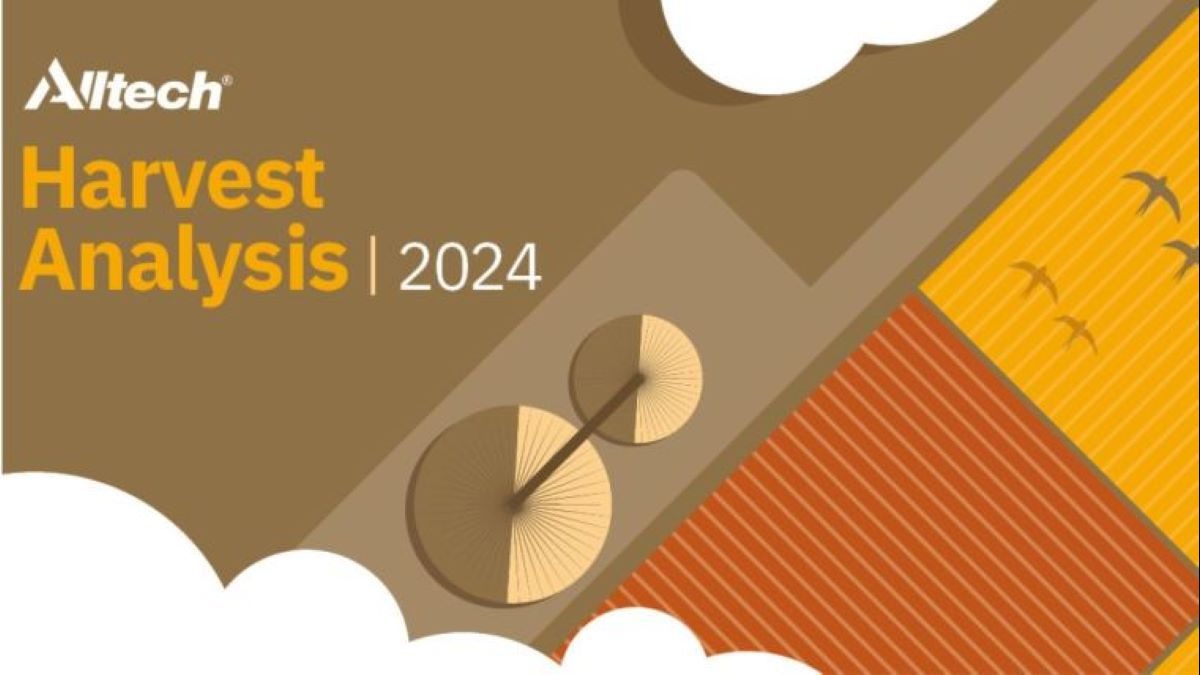
Recent mycotoxin testing in Canadian silages and grains, conducted as part of the Alltech 2024 Canadian Harvest Analysis, is revealing significant regional variability in contamination levels, with corn silage showing particularly high risks.
Mycotoxins, which are natural substances produced by moulds and fungi, are a concern for livestock producers as they can influence feed quality and subsequent animal health and performance. Unfortunately, they are more prevalent — and more of a problem in agriculture — than ever before. More than 95% of crops today are contaminated with at least one mycotoxin, and usually two or more.
Because these toxins are difficult to detect, they can cause significant damage to animal health before producers even realize they are present. A proactive mycotoxin management program is essential, and the first step is learning which mycotoxins pose the highest risk in specific regions, crops and species.
“Canada has experienced a change in weather patterns from last year, particularly of note the greater rainfall across the prairies,” said Dr. Alexandra Weaver, global technical support for Alltech. “As a result, there appears to be greater mycotoxin risk in the Western Canada 2024 harvest than last year. We’ve also noticed continued risk from deoxynivalenol and zearalenone in Eastern Canada, which can impact animal health and performance.”
Other early results from the Alltech 2024 Canadian Harvest Analysis include:
Quebec:
90% of corn silage samples have tested positive for zearalenone (ZEA), with maximum levels reaching 1,369 ppb. Deoxynivalenol (DON) is found in 68% of samples, peaking at 6,782 ppb. T2-HT2 toxins are less common (25%) but still pose a risk.
Ontario:
Wheat samples show a 63% prevalence of DON and 45% for ZEA, with moderate risk levels on average. Corn samples have tested positive for DON with a maximum of over 4 ppm, with levels most problematic for swine, young and breeding animals.
Manitoba:
59% of barley samples contain DON, with maximum levels up to 3,700 ppb. Corn silage shows a 100% prevalence of ZEA, peaking at 1,118 ppb, and a 64% prevalence of DON, with a max of 3,200 ppb.
Saskatchewan:
88% of barley silage samples contain ZEA, and 30% have DON. T2-HT2 toxins also have a presence, at about 43% occurrence. All three mycotoxins average lower risk, but with potential for higher risk levels in some samples.
Alberta:
Barley silage shows lower risks, with ZEA detected in about 22% of samples. Corn silage shows a greater risk from ZEA, in 100% of tested samples and a maximum detection of over 700 ppb. Corn silage also shows a presence for DON and T2-HT2 toxins.
British Columbia:
Corn silage samples show a presence of multiple Fusarium mycotoxins, including DON, T2-HT2 toxins, ZEA, and emerging mycotoxins. On average, DON, T2-HT2 toxins and ZEA have been detected at lower-to-moderate risk for dairy cows. However, some silage samples have shown high risk levels of DON and T2-HT2 toxins.
Overall, early harvest testing suggests that corn silage may be a higher-risk commodity across Canada. Additionally, barley may have a greater prevalence of mycotoxins, and in higher concentrations, compared to wheat. Although it is too early to provide details on corn grain, producers are reminded that corn is commonly at risk of mycotoxin contamination. As such, animal and feed producers have a need for continued vigilance across grain and silage feed sources.
Alltech will host a live broadcast, “From Field to Feed: 2024 Crop and Mycotoxin Analysis,” on Nov. 21 at 10:00 a.m. EST, streamed live from Alltech headquarters in Lexington, Kentucky, U.S. The broadcast will cover:
Register online at alltech.com/harvest-analysis to attend the live broadcast and to access the full Harvest Analysis program, as well as the full Canadian report when it is released. For more information about Alltech’s mycotoxin management solutions, visit knowmycotoxins.com.
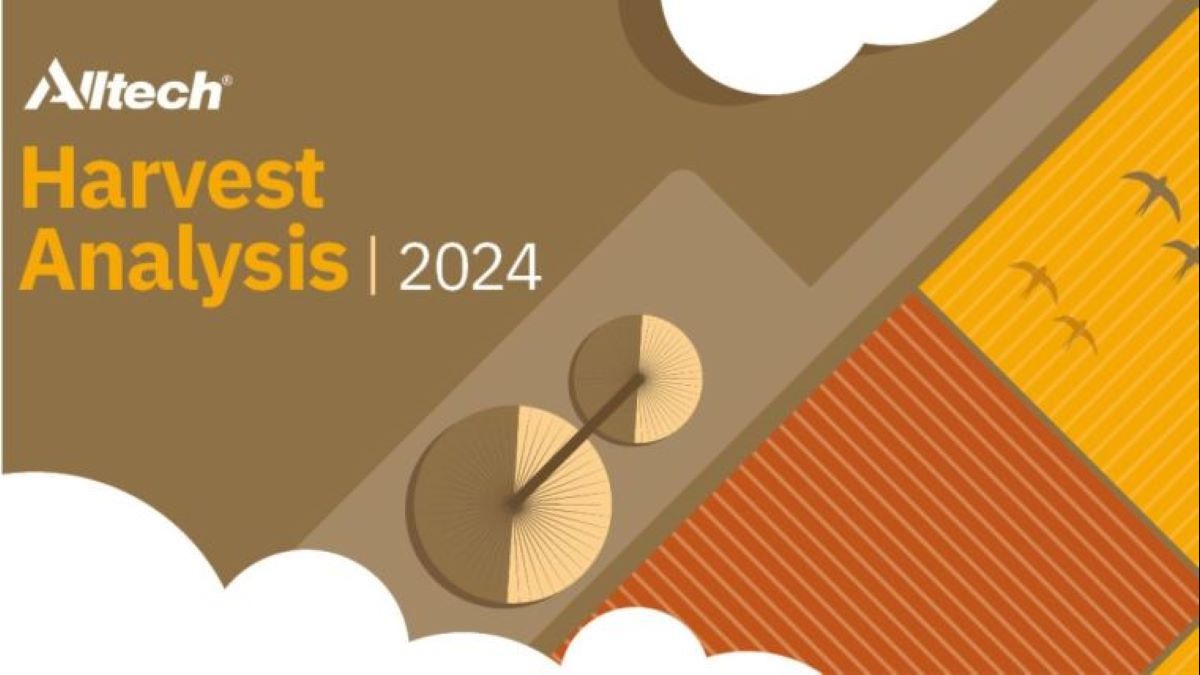
[LEXINGTON, Ky.] – Preliminary analysis of corn silage samples in the U.S. reveals a high increase in mycotoxin contamination compared to 2023, with all samples containing two or more mycotoxins. Mycotoxins are produced by certain species of molds and are a concern for livestock producers as they can influence feed quality and subsequent animal health and performance. The Alltech 2024 U.S. Harvest Analysis uncovers the true threat mycotoxins pose to animals and producers.
Mycotoxins, which are natural substances produced by molds and fungi, are more prevalent — and more of a problem in agriculture — than ever before. More than 95% of crops today are contaminated with at least one mycotoxin and usually two or more. Because these toxins are difficult to detect, they can cause significant damage to animal health before producers even realize they are present. A proactive mycotoxin management program is essential, and the first step is learning which mycotoxins pose the highest risk in specific regions, crops and species.
The preliminary results of the 2024 analysis deliver an early insight into the mycotoxin landscape. The Alltech U.S. Harvest Analysis, a decade-long initiative, is a comprehensive step in understanding the complexities of new-crop quality, mycotoxin prevalence, and the threat that mycotoxins pose to animals and producers. To determine the most accurate representation of mycotoxin risk across the U.S., samples are collected by Alltech representatives and sent to the company’s headquarters in Kentucky, where the Alltech 37+® laboratory can detect up to 54 individual mycotoxins.
“The weather pattern for 2024 is a prime driver for the change in corn silage mycotoxin risk. The precipitation over the upper Midwest started early and, in many areas, delayed planting or caused replanting,” said Dr. Max Hawkins, technical support manager with Alltech’s mycotoxin management team. “This excess moisture is a stimulant for Fusarium mold growth, which can produce mycotoxins such as type B trichothecenes, emerging mycotoxins and zearalenone. Overall, the numbers of mycotoxins per sample are 8.3 for 2024 versus 5.3 for 2023. The risk equivalent quantity (REQ), or risk estimate, from all the mycotoxin present is 201.6, or higher risk, vs. 122.7 for 2023.”
Alltech’s REQ is a system that measures the cumulative risk of multiple mycotoxins in feed, making it easier to evaluate contamination. It combines mycotoxin levels into a single value, helping producers manage feed safety and quality.
Weather and mycotoxin risk
The spike in contamination is largely attributed to significant rainfall across the upper Midwest, which created favorable conditions for the growth of Fusarium molds. These molds are responsible for producing various harmful mycotoxins, particularly type B trichothecenes, which pose the highest risk.
Key mycotoxins in 2024 corn silage
With corn harvest progressing well, the number of samples arriving at the lab are increasing week on week. Early indications are similar to last year, with risk increasing as you move to the East, following the rainfall patterns. This risk is due primarily to Fusarium mycotoxins, type B trichothecenes, fumonisin and zearalenone. These toxins can have a significant impact on monogastric performance, reproduction and overall health. More details on the corn grain samples will follow in the main report in the coming weeks.
Alltech will host a live broadcast, “From Field to Feed: 2024 Crop and Mycotoxin Analysis,” on Nov. 21 at 10:00 a.m. Eastern, streamed live from Alltech’s headquarters in Lexington, Kentucky, U.S. The broadcast will cover:
Register online at alltech.com/harvest-analysis to attend the live broadcast and to access the full Harvest Analysis program, as well as the full U.S. report when it is released. For more information about Alltech’s mycotoxin management solutions, visit knowmycotoxins.com

Preliminary results from the Alltech 2024 U.S. Harvest Analysis reveal a rise in mycotoxin contamination compared to 2023.
[DUNBOYNE, Ireland] – Alltech, a global leader in biotechnology, has just released an interim report with the preliminary findings of its mycotoxin testing programme, the Alltech 2024 European Harvest Analysis. This report offers early, detailed and actionable insights about this year’s mycotoxin risks.
Mycotoxins, which are natural substances produced by moulds and fungi, are more prevalent — and more of a problem in agriculture — than ever before. More than 95% of crops today are contaminated with at least one mycotoxin, and usually with two or more. Because these toxins are difficult to detect, they can cause significant damage to animal health before producers even realize they are present. A proactive mycotoxin management programme is essential, and the first step is learning which mycotoxins pose the highest risk in specific regions, crops and species.
The Alltech 2024 European Harvest Analysis programme tests samples of new-crop grains and forages collected from farms or animal feed production sites in 20 countries, ensuring an accurate picture of mycotoxin contamination across the continent. All samples are tested at the leading-edge Alltech 37+ lab, which can detect the presence of 54 mycotoxins. Corn samples from central and southern Europe are also tested in collaboration with SGS, a global leader in mycotoxin testing and certification.
The newly released interim report shows moderate to high mycotoxin risk so far in 2024, with significant regional variations. This is similar to the results seen at this time last year. Type B trichothecenes and emerging mycotoxins are most prevalent, but type B trichothecenes like deoxynivalenol are bringing the most risk in grains.
Increasing weather fluctuations are a major contributor to today’s rising mycotoxin risks, which vary widely by region. For example, early-season rains and floods followed by late-season droughts have created distinct challenges for crop producers this year across central and southeastern Europe. Some countries, including Hungary, Serbia, Romania and Bulgaria, are showing high levels of aflatoxin B1 in corn grain samples, with concentrations of up to 506 ppb.
“This year's weather in Europe has been extreme and unpredictable, which has been reflected in the behaviour of moulds and the production of mycotoxins. The mycotoxin risk for all animal species is medium to high, and for some mycotoxins, such as aflatoxin B1, even extremely high,” said Dr. Radka Borutova, global technical support for the Technology Group at Alltech. “The application of effective mycotoxin management is the only way to break this deadlock.”
Other key results from the Alltech 2024 European Harvest Analysis so far include:
Wheat and barley
Wheat samples analysed to date are averaging 7.7 mycotoxins per sample, with 99% containing multiple mycotoxins. Barley samples show an average of 6.3 mycotoxins, with 98% of samples containing multiple mycotoxins. The most prevalent mycotoxins in both wheat and barley are emerging mycotoxins and type B trichothecenes. The overall risk for both barley and wheat is moderate.
Straw
For straw, samples tested so far show an average of 5.9 mycotoxins per sample, with 91% of samples containing multiple mycotoxins. The most prevalent are emerging mycotoxins and deoxynivalenol, with the overall risk being high.
Forages
For grass and corn silage, the preliminary findings show 2.9 mycotoxins per sample on average, with 68% of samples containing multiple mycotoxins. The most prevalent are type B trichothecenes and Penicillium mycotoxins such as penicillic acid, mycophenolic acid and patulin, with the overall risk being high.
Once testing and analysis have been completed, the full Alltech 2024 European Harvest Analysis report will be released, giving a more complete and detailed breakdown of key results by region, crop and species.
Alltech will host a live broadcast, “From Field to Feed: 2024 Crop and Mycotoxin Analysis,” on Nov. 21 at 10:00 a.m. EST, streamed live from Alltech’s headquarters in Lexington, Kentucky, U.S. The broadcast will cover:
Register online at alltech.com/harvest-analysis to attend the live broadcast and to access the full Harvest Analysis programme, including the interim report available now and the full report when it is released.
For more information about Alltech Mycotoxin Management solutions, visit knowmycotoxins.com.
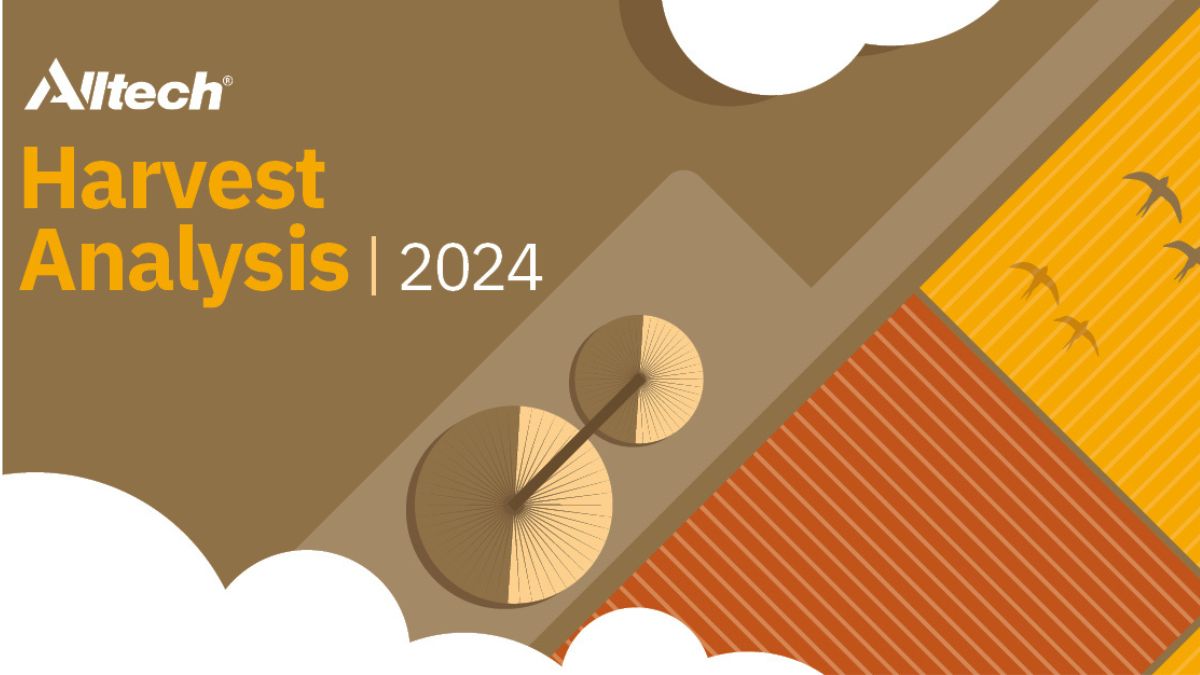
Results from the Alltech 2024 European Harvest Analysis indicate that overall risk is moderate to high.